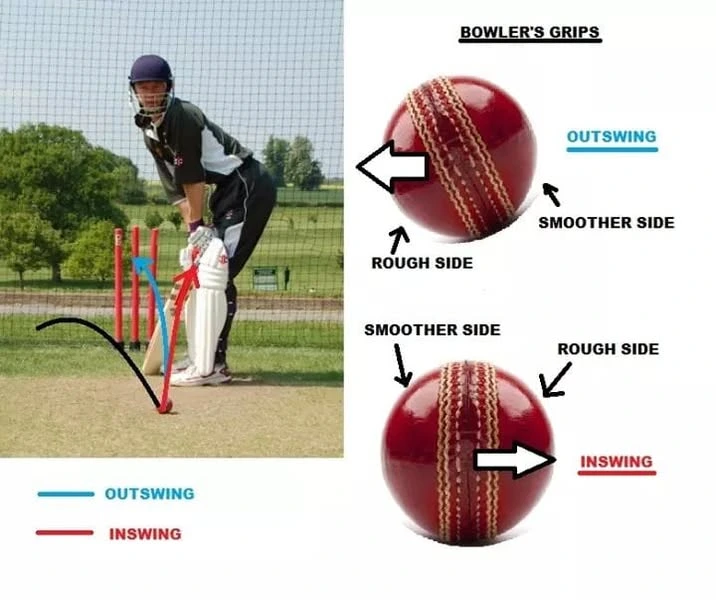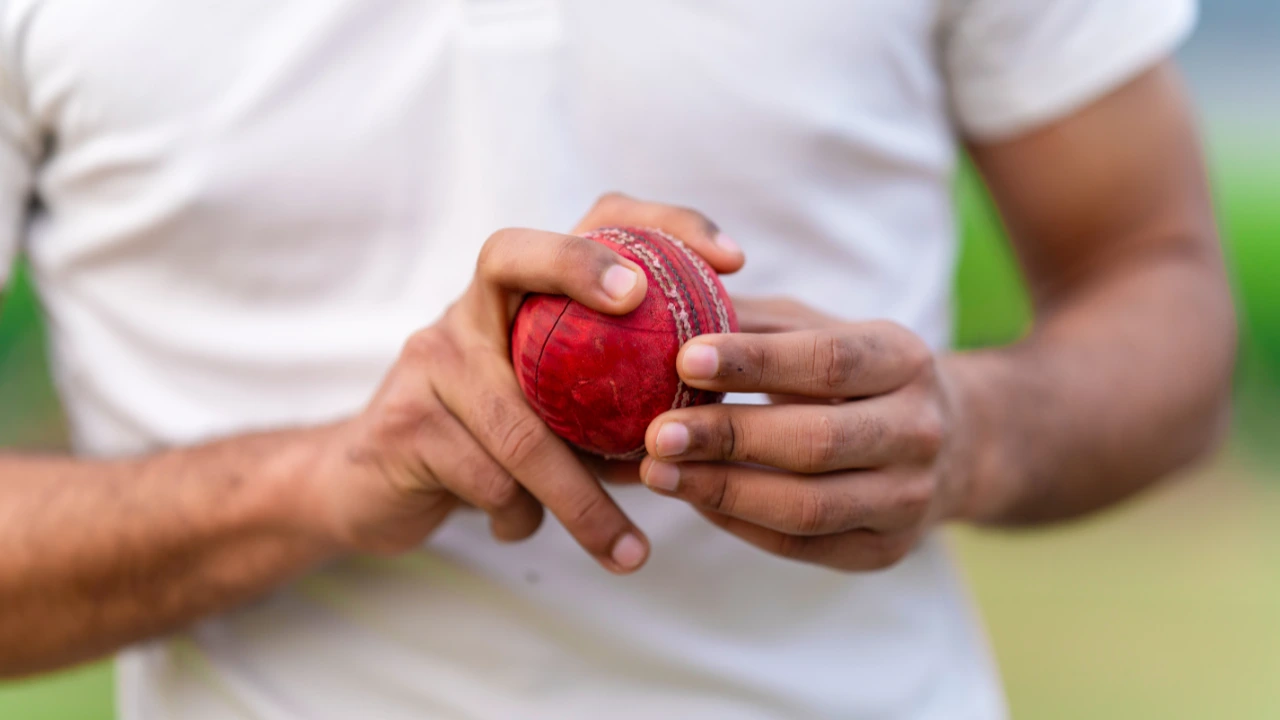The sight of a cricket ball deviating late in the air, bamboozling a well-set batsman, is one of cricket's most beautiful and potent weapons. Whether it's the classic outswinger luring an edge or the sharp inswinger trapping a batsman LBW, swing bowling is an art form. But it's not magic; it's a science you can learn. This guide will break down how to swing a cricket ball, turning you from a predictable trundler into a genuine threat.
Why Does a Cricket Ball Swing?
Before we dive into the "how," let's briefly understand the "why." Swing occurs due to a difference in air pressure on either side of the ball as it travels towards the batsman.
- Conventional Swing: Achieved with a newer ball. One side is kept polished and shiny, while the other becomes rougher. Air flows faster over the smooth, shiny side and slower over the rough side (or the side with the seam angled). This pressure differential (Bernoulli's principle in action) pushes the ball towards the rougher/seam side.
- Reverse Swing: Typically occurs with an older, very scuffed ball. The dynamics are more complex, but essentially, the roughest side "trips" the air into turbulent flow earlier, while the (relatively) smoother side maintains laminar flow longer. This can cause the ball to swing towards the shiny side, opposite to the conventional swing. We'll focus on conventional swing here, as it's the foundation.
The Pillars of Swing: What You Absolutely Need
- The Ball Condition:
- Shine is King: For conventional swing, one side of the ball must be significantly shinier than the other. Encourage your team to religiously polish one side (avoiding saliva these days – use sweat or a cloth). The rougher the other side gets naturally, the better.
- The Seam: A pronounced, proud seam is crucial. It acts like a rudder, influencing airflow.
- The Seam Position: This is paramount. The angle of the seam at the point of release dictates the direction of swing.

Mastering the Outswinger (For a Right-Arm Bowler to a Right-Hand Batsman)
The outswinger moves away from the right-handed batsman. It's the classic wicket-taking delivery.
- The Grip:
- Hold the ball with the seam angled slightly towards the slips (first or second slip).
- Your index and middle fingers should be on either side of the seam, providing control.
- Your thumb should be underneath the ball, offering support, typically on the seam or just to the side of it.
- Keep a slight gap between the ball and your palm.
- The Wrist Position:
- Your wrist should be cocked and locked behind the ball.
- At the point of release, your wrist should be angled so the shiny side is facing the batsman's leg side, and the seam is pointing towards the slips.
- Imagine "slicing" the air with the shiny side.
- The Release:
- Maintain that wrist position through the release.
- Your fingers should come down the back of the ball, imparting backspin with the seam angled correctly.
- The key is a smooth, full arm action, releasing the ball with the seam upright and angled as desired.
- Key Tip: Try to get your bowling hand to finish outside your left hip (for a right-arm bowler) to encourage the outswing shape.
Read the article: Top 5 Most Iconic Cricket Celebrations of All Time
Conquering the Inswinger (For a Right-Arm Bowler to a Right-Hand Batsman)
The inswinger darts into the right-handed batsman, often leading to bowled or LBW dismissals.
- The Grip:
- Hold the ball with the seam angled slightly towards the fine leg or leg slip.
- Index and middle fingers on either side of the seam.
- Thumb underneath for support.
- The Wrist Position:
- This is often trickier than the outswinger for many. Your wrist needs to be cocked and angled so the shiny side is facing the batsman's off-side, and the seam is pointing towards leg slip.
- Think of "showing" the batsman the back of your hand slightly more at release.
- The Release:
- The release involves more "finger work" and a slight flick of the wrist inwards.
- The seam needs to be presented angled towards the leg side.
- Some bowlers find bringing their bowling arm closer to their body helps.
- Key Tip: Focus on a powerful wrist snap and ensuring your fingers pull down on the seam towards the leg side at release. Your bowling hand might finish closer to your body or even slightly across your chest.
Buy Premium Cricket Balls - www.strive8.com
Crucial Factors Beyond Grip & Release
- Wrist Cock & Snap: A firm, cocked wrist that snaps through at release generates more revolutions on the ball and helps maintain seam position.
- Follow Through: A complete follow-through in the direction you want the ball to start its swing (or towards the target) is vital for consistency and control.
- Pace: While not everything, a certain pace is required for the air to work effectively on the ball. Too slow, and the aerodynamic effects are minimal. Aim for your natural brisk pace.
- Atmospheric Conditions: Humidity and cloud cover can aid swing. Drier, sunnier conditions might make it harder. A gentle breeze into the bowler's face can assist outswing, while a breeze from leg to off can help inswing.
- Patience and Practice: Nobody masters swing overnight. It requires dedicated practice focusing on seamless presentation and wrist position. Film yourself if possible!
Common Mistakes to Avoid
- Pushing the Ball: Trying to bowl too fast and losing control of the wrist and seam.
- Scrambled Seam: If the seam wobbles excessively, the swing will be inconsistent or non-existent.
- Incorrect Ball Maintenance: Polishing both sides or neglecting the shine.
- Trying for Too Much Swing: This often leads to loss of control and line. Start by aiming for a small, late deviation.
A Note on Reverse Swing
Reverse swing is an advanced skill, usually appearing when the ball is 40+ overs old and very worn. One side is kept as smooth as possible (even if not shiny), while the other is extremely rough. The principles are complex, often involving a lower arm action and a significant pace. For now, master conventional swing first.
Go Forth and Swing It!
Learning to swing the cricket ball adds a formidable weapon to your arsenal. It’s about understanding the principles, meticulous practice, and developing a feel for the ball in your hand. Start with one type of swing (outswing is usually easier), perfect it, then add the other. Be patient, experiment, and soon you'll be watching batsmen struggle against your newfound art.
Check out our new blog - www.strive8.com/blogs

